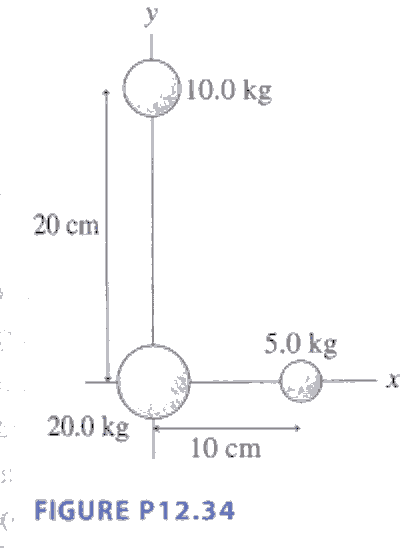CHAPTER 12
- (P.365 Prob.34) Figure P12.34 shows three masses. What are the magnitude
and the direction of the net gravitational force on (a) the 20.0-kg mass and
(b) the 5.0-kg mass? Give the direction as an angle cw or ccw of the y-axis.

- (P.365 Prob.40) A 1.0-kg object is released from rest 500 km (» 300 miles)
above the Earth.
a. What is its impact speed as it hits the ground?
Ignore air resistance.
b. What would the impact speed be if the earth
were flat?
c. By what percent is the flat-earth calculation in error?
d.
Suppose a space shuttle astronaut, while out for a stroll, "drop"
a 1.0-kg hammer. Will it fall to earth? Explain why or why not.
- (P.366 Prob.48) Two spherical asteroids have the same radius R.
Asteroid 1 has mass M and asteroid 2 has mass 2M. The two
asteroids are released from rest with distance 10R between their
centers. What is the speed of each asteroid just before they collide?
- (P.366 56) A satellite orbiting the earth is directly over a point on the
equator at 12:00 midnight every two days. It is not over that point at any
time in between. What is the radius of the satellites's orbit?
- (P.368 Prob.75) Challenge Problem. Your job with NASA is to
monitor satellite orbits. One day, during a routine survey, you find that a
400-kg satellite in a 1000-km-high circular orbit is going to collide with a
smaller 100-kg satellite traveling in the same orbit but in the opposite
direction. Knowing the construction of the two satellites, you expect they
will become enmeshed into a single piece of space debris. When you notify
your boss of this impending collision, he asks you to quickly determine
whether the space debris will continue to orbit or crash into the earth.
What will the out come be?
